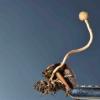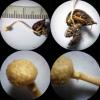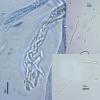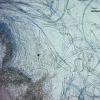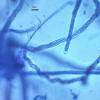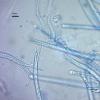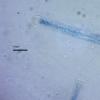
07-12-2025 16:07
Arnold BüschlenHallo, ich habe in einer Moos-Aufsammlung (epiohy

05-12-2025 17:33
 Bruno Coué
Bruno Coué
Bonjour, je serais heureux de recueillir votre avi

07-12-2025 09:24
De la pasada semana en Galicia EspañaEn el suelo

06-12-2025 00:19
 Viktorie Halasu
Viktorie Halasu
Hello, would anyone have this article, please? An

02-12-2025 18:59
This pair of ascos 2.5cm across were on recently b
On a trouvé un Cordyceps la semaine derniere, dans un bois dans le nord d'Angleterre. D'après "Fungi of Switzerland" c'est Cordyceps sphecocephala, mais je ne suis pas certain. Le stem est jaune-orange dans le description, mais le specimen que nous avons trouvé est presque blanc ou crême. En plus, les spores dans le livre sont plus grandes et plus fines.Il y a un autre nom - c'est le même asco? – Ophiocordyceps ditmarii. Pouvez-vous m'aider, s'il vous plâit?
Cordialement,
Steve
Hi,
This Cordyceps, growing singly in acid woodland, altitude about 350 m, on a buried wasp(?) was collected last Wednesday from the Peak District, Northern England. (I though at first it was a small immature mushroom, which I had left to grow). This morning I removed some of the debris from the base and discovered the insect.
Overall colour is whitish cream. Head: 2 mm x 2mm, dotted with yellowish ostioles, from which tendrils of hyaline spores are ejected. Stem is 2.5 cm x 1 mm, sinuous and not enlarged at the base. A collar is immediately below the head, 1 mm long. The asci are sinuous and very long – perhaps 3-400 um long, and about 7 um wide. The apex is swollen, hyaline in Methylene Blue, with a pore 1 mm wide. Oblong, hyaline non-septate spores appear to be numerous (part-spores?) and of varying sizes from 6–10 x 2-2.5 um, some in chains. Within the ascus they are packed in multiple chains. No paraphyses noted.
The description by Breitenbach and Kränzlin (Fungi Of Switzerland, Vol. 1) of Cordyceps sphecocephala is similar except:
1) the stem is described as yellow-orange, darker and narrowed at the base
2) spores are given as 8-14 x 1.5-2
3) asci are given as up to 180x6 (250x8 acc lit).
I note that the FRDBI (Fungal records Database of Britain and Ireland) has most records as Ophiocordyceps ditmarii (as Cordyceps specocephala is not authentically British). Could anyone help me with correctly naming this fungus?
Microscopy in Methylene Blue.
Best regards,
Steve

That's very useful - and formidable!
Had a quick look and I think it might well be...Ophiocordyceps ditmarii,
Many thanks,
Steve

Yes, I agree with O. ditmarii. I know C. "sphecocephala" auct. (true C.s. is a foreign species, as far as I remember South-American) from many findings, mostly on wasps - once I counted about 50 carpophores within one larger forest area in Southern Germany within about 2 or 3 hours, mostly only one or sometimes two stromata). In Portugal I found O. ditmarii on another host - no wasp, but I could not find out what exactly).
Regards from Lothar

Lothar is right, O. sphecocephala is known only in tropical area (in my opinion)
I have cultured several specimens of Ophiocordyceps from France, occuring on wasp or fly. I obtained the same asexual state and the molecular data indicate that they are the same species.
Best regards,
Christian

a friend living in Calderdale (not that far from you) turns this up regularly in the moist cloughs - as here: http://www.ascofrance.com/search_recolte/3603
best wishes
Chris
This was quite an exciting find for me this morning - the wasp was concealed and protected in an empty nutshell!
Cheers,
Steve


